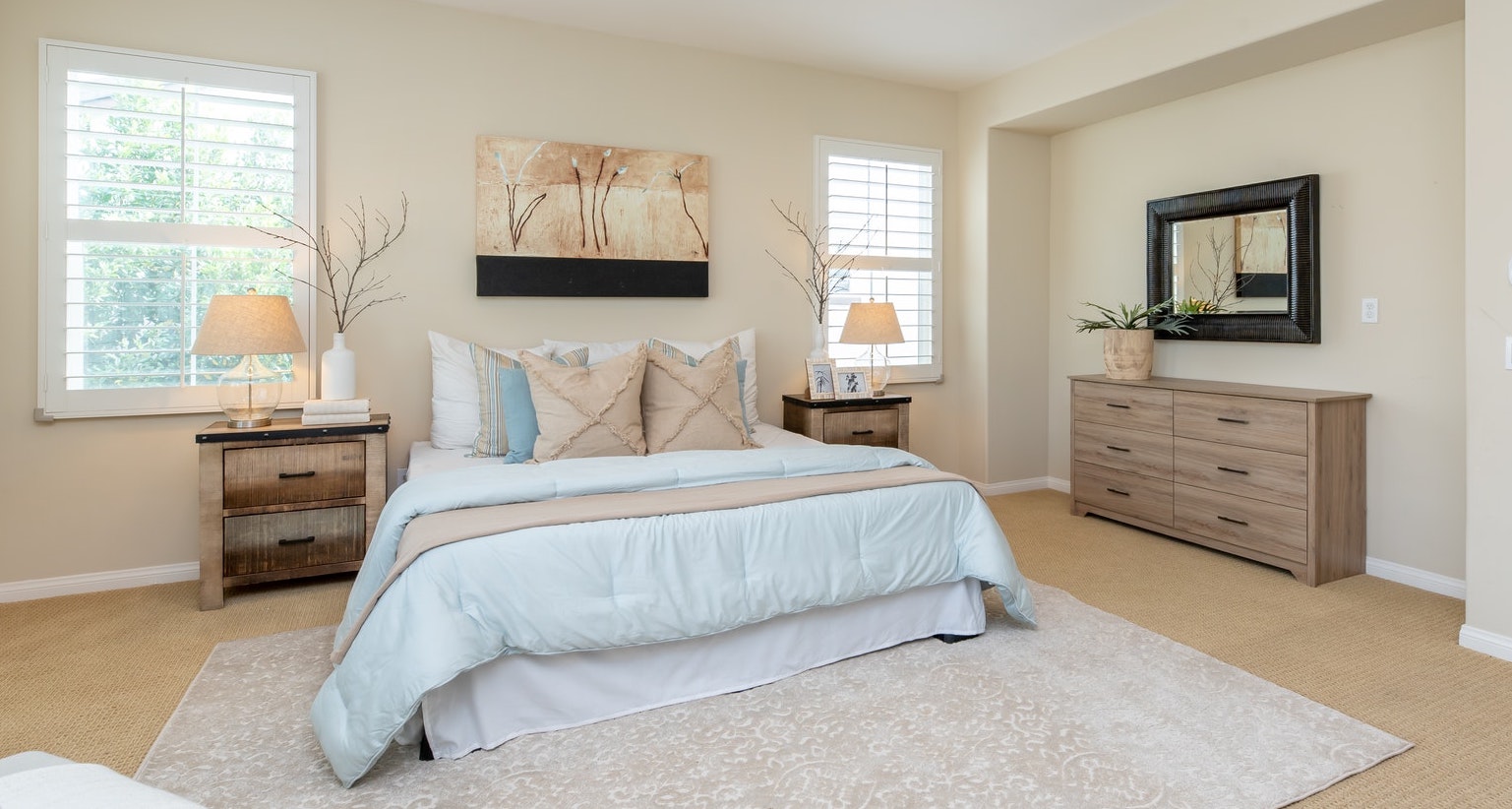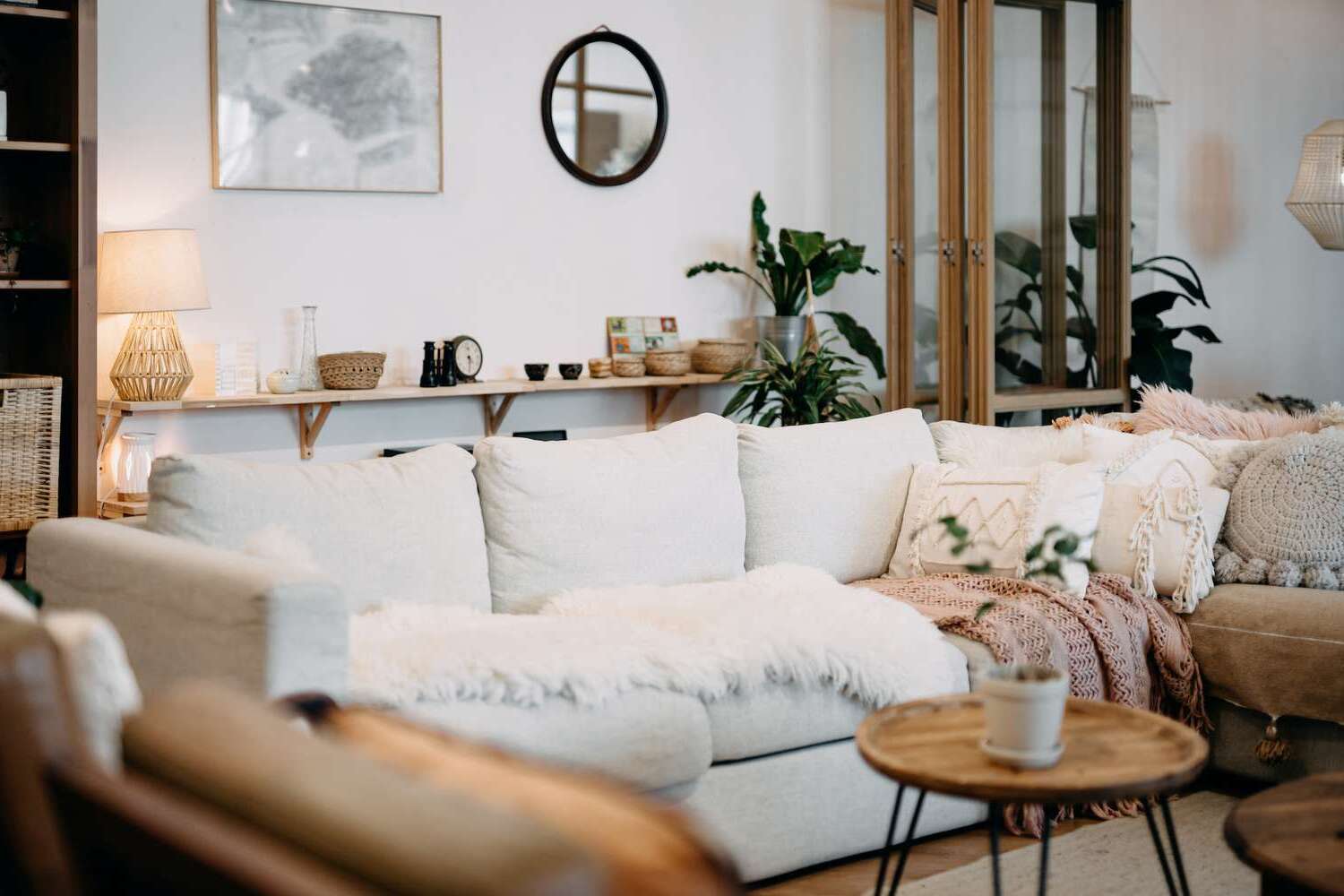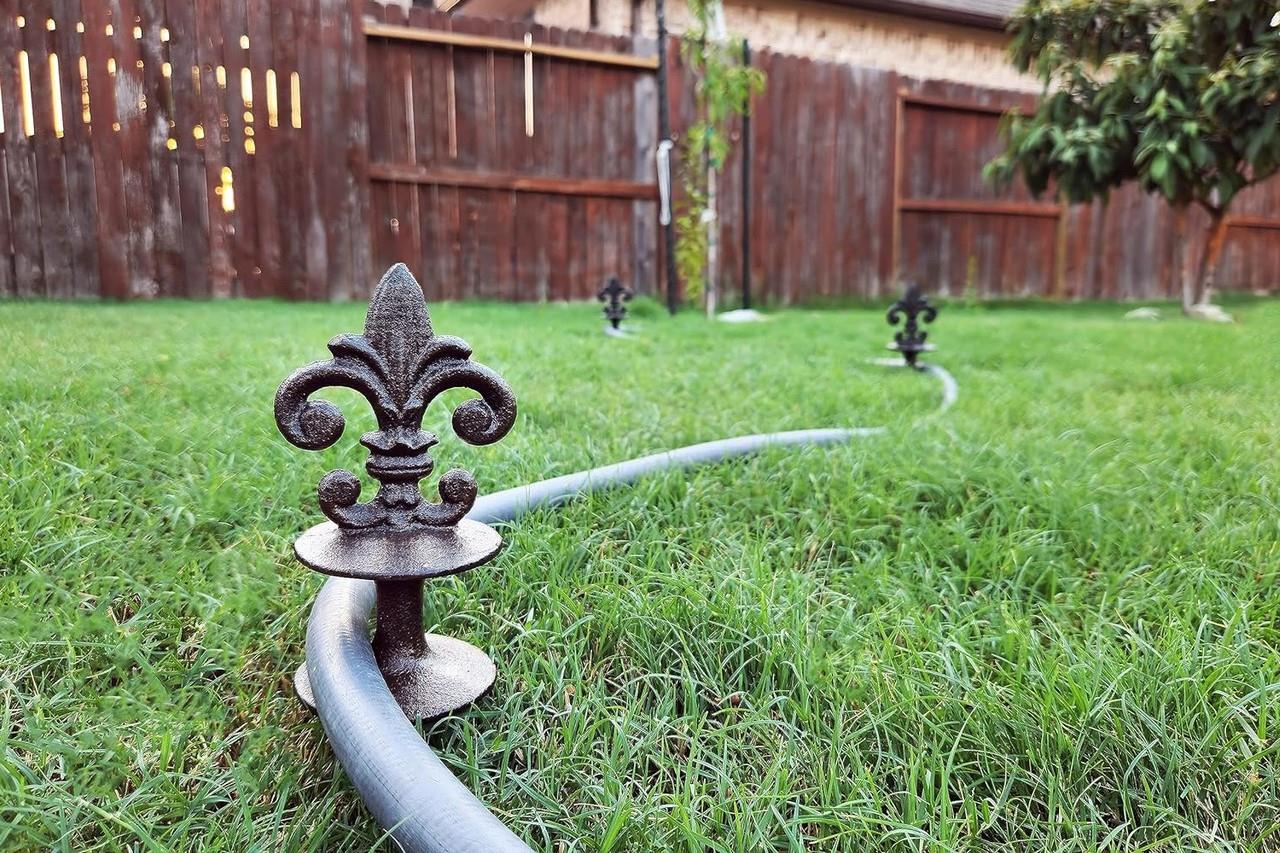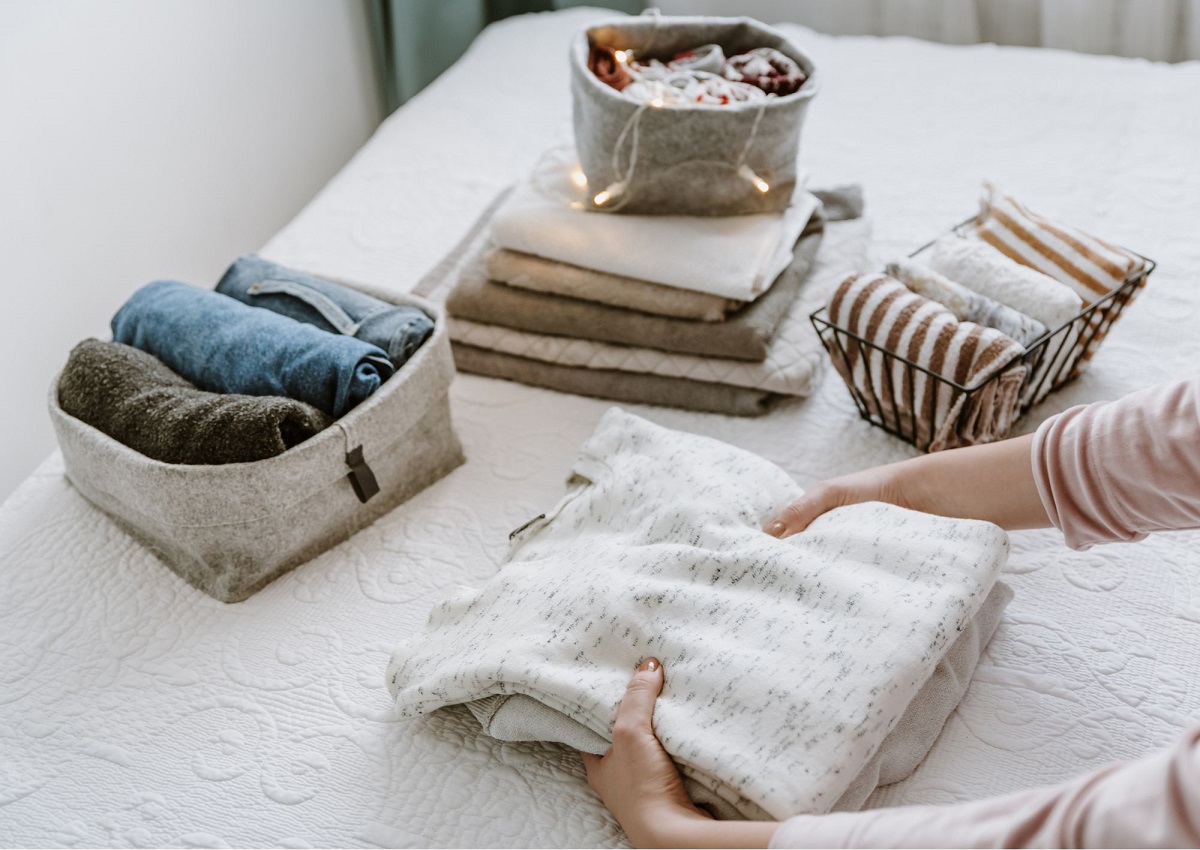Home>Interior Design>January Decluttering Rules: Refresh A Home For The New Year


Interior Design
January Decluttering Rules: Refresh A Home For The New Year
Modified: November 2, 2024
Refresh your home for the New Year with our January decluttering rules. Transform your space with interior design tips and make it feel brand new.
(Many of the links in this article redirect to a specific reviewed product. Your purchase of these products through affiliate links helps to generate commission for Storables.com, at no extra cost. Learn more)
Introduction
The arrival of a new year often brings with it a sense of renewal and a desire for change. It’s a time to reflect on the past and set new goals for the future. One area of our lives that can greatly benefit from this fresh start is our homes. By decluttering and refreshing our living spaces, we can create an environment that promotes peace, productivity, and well-being.
Decluttering is more than just tidying up or getting rid of excess belongings. It’s a process of intentionally creating space and letting go of what no longer serves us. It’s about creating a home that reflects our current needs and aspirations. Whether you’re looking to create a calmer and more organized space or simply update the look and feel of your home, following these January decluttering rules can help you achieve your goals.
Key Takeaways:
- Set clear goals before decluttering to stay focused and motivated. Prioritize areas that align with your objectives and celebrate your achievements along the way.
- Declutter one room at a time to prevent overwhelm and appreciate your progress. Maintain the organization and order you’ve created to turn your entire home into a haven of peace and serenity.
Read more: How To Refresh Your Home For The New Year
Rule 1: Set Clear Goals
Before diving into the decluttering process, it’s essential to set clear goals for what you want to achieve. This will give you a sense of direction and motivation throughout the process. Take some time to reflect on what you hope to accomplish with your home. Do you want to create a more minimalist space? Or perhaps you’re looking to make it more functional and efficient? Write down your goals and keep them in mind as you declutter.
Having clear goals will help you prioritize your efforts. You can focus on areas that align with your objectives and make decisions based on what will help you achieve those goals. For example, if your goal is to create a serene and clutter-free bedroom, you might prioritize decluttering your closet and creating a calming color scheme.
Additionally, setting clear goals helps you measure your progress and celebrate your achievements along the way. As you complete each step towards your goals, take a moment to acknowledge your accomplishments. This will keep you motivated and energized to continue decluttering.
Remember, your goals should be realistic and specific to your needs and lifestyle. Avoid comparing your progress or style to others, as everyone’s vision for their home is unique. Setting clear goals that are meaningful to you will guide your decluttering journey and ensure that you’re creating a space that truly reflects your vision and values.
Rule 2: Declutter One Room at a Time
One of the most effective ways to tackle the decluttering process is to focus on one room at a time. This approach helps prevent overwhelm and allows you to give each space the attention it deserves. Start by choosing a room that’s manageable in size and doesn’t have an excessive amount of clutter.
Begin by mentally visualizing how you want the room to look and function. This will help you stay focused and make decisions about what to keep and what to let go of. As you go through the room, make three piles: one for items to keep, one for items to donate or sell, and one for items to discard.
When deciding what to keep, ask yourself if the item is still useful or brings you joy. If not, it’s time to let it go. Be honest with yourself and avoid holding onto items out of a sense of obligation or nostalgia. Remember, by decluttering, you’re creating space for new possibilities and a more organized and functional home.
As you declutter each room, consider the purpose of the space. Is it a place for relaxation, creativity, or productivity? This will help you determine what items are necessary for that particular room and what can be removed. Keep in mind the balance between functionality and aesthetics as you decide what to keep and how to organize the space.
Once you’ve finished decluttering one room, take a moment to appreciate your progress before moving on to the next room. Seeing the impact of your efforts will provide motivation and encouragement to continue decluttering the rest of your home.
Remember, decluttering is an ongoing process, and it’s important to maintain the organization and order you’ve created. Establishing daily habits, such as putting things away after use, can help prevent clutter from accumulating again. By decluttering one room at a time and maintaining the order, your entire home will become a haven of peace and serenity.
Rule 3: Sort and Categorize Belongings
Sorting and categorizing your belongings is a crucial step in the decluttering process. It allows you to gain a better understanding of what you have and make informed decisions about what to keep and what to let go of. By organizing your items into categories, you can create a more efficient and streamlined living space.
Start by choosing a specific category to focus on, such as clothing, books, or kitchen items. Take out all the items within that category and lay them out in a designated area. This will give you a visual representation of what you have and make it easier to assess each item individually.
As you go through the items, create sub-categories based on their purpose or use. For example, if you’re sorting clothing, you can create categories like tops, bottoms, dresses, and accessories. This will help you better organize your belongings and make it easier to find and access them in the future.
During the sorting process, ask yourself important questions about each item. Does it still fit? Have you used it in the past year? Does it bring you joy or serve a purpose? Be honest with yourself and let go of items that no longer align with your current needs and lifestyle.
Consider your available storage space as well. If you find that you have too many items for the storage space you have, it may be necessary to downsize your collection further. This will help you create a more organized and clutter-free environment.
Once you’ve sorted and categorized your belongings, it’s time to find appropriate storage solutions for each category. Invest in storage containers, bins, or shelves that can help keep your items organized and easily accessible. Labeling containers can also be helpful in maintaining order and ensuring that everything has a designated place.
Remember, sorting and categorizing your belongings is an ongoing process. Regularly assess your items and make adjustments as needed. By maintaining an organized system, you’ll not only reduce clutter but also create a more functional and visually appealing living space.
Rule 4: Donate or Sell Unused Items
As you declutter and sort through your belongings, you’re likely to come across items that you no longer need or use. Instead of storing them away or throwing them out, consider donating or selling these unused items. This not only helps declutter your home but also gives these items a new purpose and helps others in need.
When deciding whether to donate or sell an item, consider its condition, value, and market demand. Items that are still in good condition and have value can be sold online through platforms like eBay or Facebook Marketplace. You can also organize a yard sale or participate in local community events to sell your items. Remember to set reasonable prices and be prepared to negotiate with potential buyers.
On the other hand, items that may not have much resale value but are still in usable condition can be donated to charitable organizations, thrift stores, or local community centers. Consider donating to organizations that align with causes you care about. Some organizations even offer pick-up services, making it convenient for you to donate larger items.
When donating or selling items, be mindful of the condition and quality of what you’re offering. Ensure that items are clean, functional, and in good shape. This will increase the chances of them being accepted or sold, and it shows respect for the recipients or buyers.
In addition to donating or selling, you may also consider gifting items to friends or family members who can make use of them. The joy of giving and knowing that your items are being put to good use can be immensely rewarding.
Remember, the purpose of decluttering is not just to get rid of things, but also to contribute to a more sustainable lifestyle. By donating or selling unused items, you’re reducing waste and extending the life cycle of these items. It’s a win-win situation: you declutter your home and positively impact others and the environment.
Consider starting with one area at a time, such as a closet or a kitchen drawer, to avoid feeling overwhelmed. Set a timer for 15-30 minutes each day to make steady progress without burning out.
Rule 5: Create Organized Storage Spaces
To maintain a clutter-free home, it’s crucial to create organized storage spaces. Having designated areas for your belongings not only keeps your home tidy but also makes it easier to find and access items when you need them. Here are some tips for creating efficient storage solutions:
Assess your storage needs: Take stock of the items you have and consider what type of storage solutions would work best for each category. For example, consider whether you need shelves, cabinets, bins, or hooks to store your belongings.
Maximize vertical space: Utilize wall space by installing shelves, hooks, or hanging organizers. This allows you to store items vertically and frees up valuable floor space. Vertical storage is particularly useful for organizing smaller items or displaying decorative pieces.
Invest in storage containers: Use clear storage containers or bins to store items that aren’t used frequently. Label these containers to easily identify the contents and stack them to optimize space. This is especially handy for items like seasonal decorations, extra bedding, or out-of-season clothing.
Use drawer dividers and organizers: Make the most of your drawers by using dividers or organizers to separate items and keep them neatly arranged. This is particularly useful for organizing small items like accessories, office supplies, or kitchen utensils.
Create zones for specific activities: Determine the different activities that take place in your home and create zones for each. For example, designate a specific area for crafting, a homework station, or a home office. This helps keep related items together and allows for greater efficiency and productivity.
Rotate and declutter regularly: Periodically assess the contents of your storage spaces and declutter as needed. Dispose of or donate items that are no longer useful or in good condition. This helps prevent storage spaces from becoming overcrowded and ensures that you’re only keeping what you truly need and enjoy.
Consider multifunctional furniture: Opt for furniture pieces that offer storage solutions, such as ottomans with hidden compartments, coffee tables with drawers, or beds with built-in storage. This maximizes your use of space and provides additional storage options.
Remember, the key to creating organized storage spaces is to have a designated place for everything. When everything has a home, it’s easier to maintain order and avoid clutter from accumulating. Regularly reassess your storage needs and make adjustments as necessary to keep your home organized and functional.
Rule 6: Streamline Digital Clutter
In today’s digital age, decluttering isn’t just limited to physical spaces. Our digital lives can also become cluttered and overwhelming. Streamlining your digital clutter is essential for a more organized and peaceful existence. Here are some strategies to help you tackle digital clutter:
Organize your digital files: Start by organizing your files on your computer, smartphone, or cloud storage. Create folders and subfolders with clear and descriptive names to categorize your documents, photos, and other files. Regularly review and delete files that are no longer needed.
Manage your email inbox: Your email inbox can easily become overwhelming. Take time to unsubscribe from unnecessary newsletters and promotional emails. Create folders or labels to categorize important emails and archive or delete the rest. Establish a routine for regularly clearing out your inbox to avoid feeling overwhelmed by a growing pile of unread messages.
Minimize digital subscriptions: Review your digital subscriptions, such as streaming services, online memberships, and software subscriptions. Cancel any subscriptions that you no longer use or find value in. This not only helps declutter your digital life but can also save you money.
Clean up your digital devices: Remove unused apps, games, and files from your smartphone, tablet, or computer. Organize your apps into folders and delete those that you no longer need or use. Ensure that your digital devices have sufficient storage space and run efficiently.
Back up and secure your data: Regularly back up your important digital files to an external hard drive, cloud storage, or another secure location. This protects your data from loss or damage and allows you to declutter your devices by removing unnecessary duplicates and files.
Manage your digital photos: Photos can quickly accumulate, cluttering up your digital storage. Take time to review and delete blurry, duplicate, or unnecessary photos. Organize your photos into albums or folders based on events, dates, or themes for easier navigation and retrieval.
Establish digital decluttering routines: Incorporate regular digital decluttering sessions into your schedule. Set a specific time each month to review and declutter your digital files, emails, and subscriptions. This routine will help you stay on top of digital clutter and prevent it from piling up again.
By streamlining your digital clutter, you’ll experience improved efficiency and productivity in your digital life. You’ll be able to easily find what you need, stay organized, and create a more peaceful and enjoyable digital environment.
Rule 7: Refresh and Revamp Furniture Placement
When it comes to refreshing your home, sometimes a simple change in furniture placement can make a big difference. Rearranging your furniture not only gives your space a new look but can also improve traffic flow, functionality, and overall energy in the room. Here are some tips to help you refresh and revamp your furniture placement:
Assess the current layout: Take a step back and examine the current furniture placement in each room. Consider the flow of the room, the purpose of the space, and how you and your family use it. Identify any areas that feel cramped or inefficient and make note of any furniture that may need to be replaced or removed.
Experiment with different layouts: Don’t be afraid to think outside the box and try different furniture arrangements. Move pieces around to create a new focal point, open up the space, or maximize natural light. Experiment until you find a layout that feels balanced, functional, and visually appealing.
Create conversation areas: Arrange seating in a way that encourages conversation and social interaction. Position sofas and chairs facing each other to create cozy conversation nooks. Ensure that there is enough space for movement and that furniture is arranged to facilitate easy communication.
Consider traffic flow: Keep in mind how people move through the room and arrange furniture to accommodate smooth traffic flow. Avoid placing furniture in direct pathways or creating obstacles that may disrupt movement. Consider how the room is accessed and make sure there is a clear and easy pathway.
Highlight focal points: Identify the architectural features, focal points, or stunning views in the room and arrange furniture to accentuate them. Position seating or artwork to draw attention to these focal points and create an inviting and visually engaging space.
Scale and proportion: Take into account the size and scale of your furniture pieces in relation to the room. Large furniture in a small space can make it feel cramped, while small furniture in a large space may look out of proportion. Ensure that the scale of your furniture matches the scale of the room to create a balanced and harmonious environment.
Balance functionality and aesthetics: While rearranging furniture, strike a balance between functionality and aesthetics. Consider how you use the space and arrange furniture to support those activities. Simultaneously, ensure that the arrangement is visually pleasing and reflects your personal style.
Experiment with focal point rotation: If there is a statement piece, like a fireplace or a large window, consider rotating the rest of the furniture around it to change the room’s dynamic. This can breathe new life into the space and allow you to experience it from a different perspective.
Refresh and revamp your home by simply rearranging your furniture. Be open to trying new layouts and don’t be afraid to play around with different options. By following these tips, you’ll create a space that feels fresh, functional, and visually appealing.
Rule 8: Implement Daily Maintenance Habits
Once you’ve decluttered, organized, and refreshed your home, it’s important to implement daily maintenance habits to keep your space clean and organized. By establishing simple routines, you can prevent clutter from accumulating and maintain the sense of calm and order you’ve created. Here are some daily maintenance habits to consider:
Make your bed: Start your day by making your bed. It instantly creates a tidier and more put-together look in your bedroom. Plus, it sets a positive tone for the rest of the day and can serve as a daily accomplishment.
Clear countertops and surfaces: Take a few minutes each day to clear off and wipe down countertops, tables, and other surfaces. Put away items that don’t belong and ensure that everything has its designated space. This prevents surfaces from becoming cluttered and makes it easier to keep them clean.
Put things away immediately: Avoid leaving things lying around and develop a habit of putting items away as soon as you’re done using them. This prevents clutter from building up and saves you time in the long run. Teach your family members to do the same to maintain an organized and tidy living space.
Handle mail and paperwork: Sort through mail and paperwork as soon as you receive them. Discard junk mail and shred sensitive documents. File important papers or create a system for managing bills, receipts, and other documents that need to be kept. By staying on top of paperwork, you prevent it from piling up and becoming overwhelming.
Clean as you go: Incorporate cleaning tasks into your daily routine. Wipe down kitchen counters after meal preparation, wash dishes immediately after use, and sweep or vacuum high-traffic areas regularly. By tackling small cleaning tasks as you go, you prevent dirt and clutter from accumulating and make the overall cleaning process more manageable.
Do a quick evening tidy-up: Before you go to bed, spend a few minutes doing a quick tidy-up around the house. Put away any items that were left out and ensure that everything is in its proper place. This helps you wake up to a clean and organized home each morning.
Involve the whole family: Maintain a team effort by involving your family members in daily maintenance habits. Assign age-appropriate tasks to each family member and make it a routine for everyone to contribute to keeping the home clean and organized. This not only lightens the load but also instills a sense of responsibility and promotes teamwork.
Regularly declutter and reassess: Set aside time each month to declutter and reassess your belongings. Get rid of items that no longer serve you or bring you joy. This prevents clutter from accumulating and allows you to maintain the order and minimalism you’ve worked hard to achieve.
Implementing daily maintenance habits ensures that the effort you put into decluttering and organizing your home is sustained over time. By making these habits a part of your daily routine, you’ll enjoy a cleaner, more organized, and stress-free living environment.
Conclusion
Congratulations on taking the steps to refresh and declutter your home for the New Year! By following these January decluttering rules, you have set yourself up for a more organized, efficient, and visually pleasing living space. Each rule, from setting clear goals to implementing daily maintenance habits, plays a significant role in creating a home that supports your well-being and reflects your unique style.
Remember that decluttering is an ongoing process, and it’s important to stay committed to maintaining the order and organization you’ve achieved. Regularly reassess your belongings, create designated storage spaces, and establish routines that keep clutter at bay. By doing so, you can enjoy the benefits of a clean and clutter-free home throughout the year.
Not only does decluttering and refreshing your home enhance its aesthetic appeal, but it also has numerous benefits for your mental and emotional well-being. A clean and organized space promotes clarity of mind, reduces stress, and enhances productivity. It provides a welcoming and comfortable environment where you can relax, rejuvenate, and pursue your passions.
As you embark on your decluttering journey, remember to approach it with a sense of mindfulness and gratitude. Be grateful for the items you choose to keep and cherish them, but also be willing to let go of those that no longer serve you. Embrace the process of decluttering as an opportunity for personal growth and positive change.
Finally, enjoy the transformation that comes with decluttering and refreshing your home. Take the time to appreciate the results of your hard work and revel in the newfound sense of peace and harmony that comes with a decluttered living space. Your refreshed home will inspire and uplift you, setting the tone for a positive and fulfilling year ahead.
So, dive into your decluttering journey with enthusiasm, follow these January decluttering rules, and create a home that truly represents your vision and aligns with your needs and aspirations. Here’s to a refreshingly clutter-free and inspiring New Year!
Frequently Asked Questions about January Decluttering Rules: Refresh A Home For The New Year
Was this page helpful?
At Storables.com, we guarantee accurate and reliable information. Our content, validated by Expert Board Contributors, is crafted following stringent Editorial Policies. We're committed to providing you with well-researched, expert-backed insights for all your informational needs.














0 thoughts on “January Decluttering Rules: Refresh A Home For The New Year”